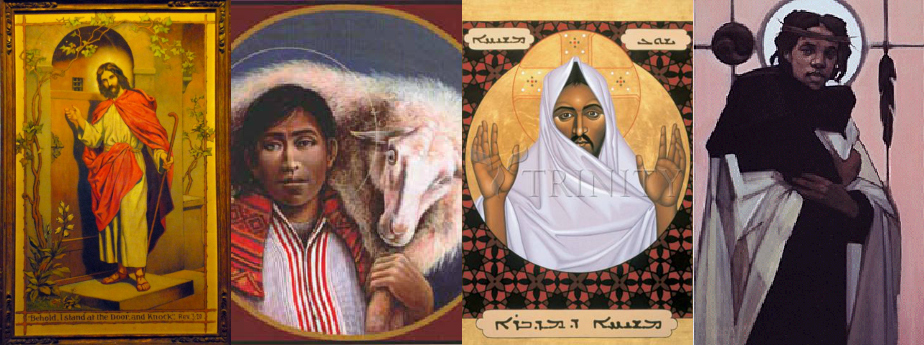
At Hanover, we imagine the faces of Jesus through many cultural lenses. This view is reflected in artwork throughout the building.
Christ Knocking on the Door – George Newman
Many people will recognize this depiction of “Christ Knocking at the Door.” The painting is done in oil, upon a specially prepared back. No glass has been used to cover the surface, so that as much reflection as possible might be eliminated, but the surface is coated with a permanent preparation which is protective and beautifying. Artist George A. Newman studied art at the Spring Garden Institute in Philadelphia, and was the recipient of silver and gold medals upon graduation. He continued his studies at the Pennsylvania Academy of the Fine Arts, and later in Paris, with Frederick Rondel, an American National Academician. Upon his return, he joined the Philadelphia Ledger as a courtroom and news artist. As a free-lance artist, he was commissioned to do architectural renderings and book illustrations. Later, he moved to the countryside outside Lansdale, Pennsylvania, where he focused on landscape paintings until his death in 1965.
The Good Shepherd – John Giuliani
Friar Giuliani had begun a career in art before feeling called to the priesthood. Since establishing the Benedictine Grange, a small monastic community in Connecticut, he has been drawn to America’s indigenous peoples as the subject of his artistic concentration. He intends his work to celebrate the soul of the Native American as the original presence in this land, and to speak of the reconciliation of the spiritual vision of native and immigrant peoples.
Christ of the Desert – Robert Lentz
Brother Robert, a descendant of Russian emigrants, completed an apprenticeship in Byzantine iconography and went on to become known worldwide for his works, which adapt traditional conventions to twenty-first century Church needs. This particular icon celebrates the richness of Syriac Christianity. The Syriac language, used by ancient Semitic churches of the Middle East as their liturgical language, is a dialect of Aramaic, the language of Jesus. The inscriptions in the upper corners of the icon read, “Jesus Christ”, and at the bottom, “Christ of the Desert”.
Jesus of the People – Janet McKensie
Vermont artist Janet McKensie creates empowering images of women in her sacred and secular imagery. For her “Jesus of the People”, her model for Jesus was a woman. Ms. McKensie says, “The essence of the work is simply that Jesus is all of us.” The painting was selected as the winner of the National Catholic Reporter’s “Jesus 2000” competition, whose judge found the work both dignified and haunting. Jesus is flanked by three symbols: the yin-yang representing perfect harmony, the halo conveying holiness, and the feather symbolizing transcendent knowledge.
